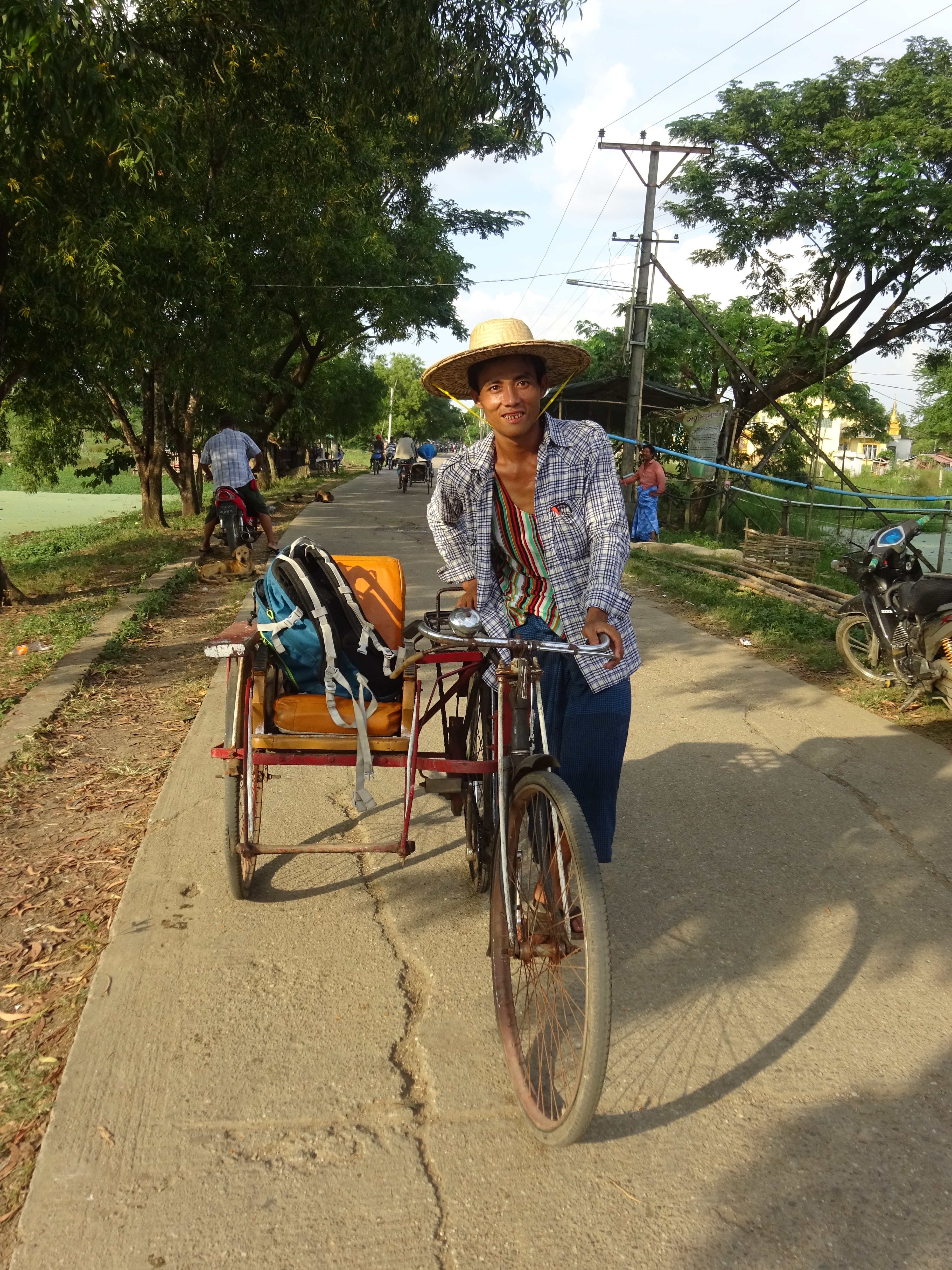© C. Dutilleul
English version below
En 2012, pratiquement aucun conducteur de trishaw n’était propriétaire de son véhicule ; il le louait 700 Kyats par jour, soit un tiers de son revenu (2010). De même, les tailleurs louent leur machine à coudre, les restaurants ambulants leur voiturette…
Un trishaw doit aussi payer une licence 15000 Kyats par an, sous peine d’une amende de 50 000 Kyats. En cas de crevaison, il dépensera 350 Kyats pour la réparation, 200 Kyats pour un café, 4 à 700 Kyats pour le bétel qui va l’aider à supporter la fatigue et, s’il faut changer une roue, 5000 Kyats pour la roue avant, 6 000 pour celles de l’arrière. Il lui faut aussi mettre de côté le loyer de la maison, 50 Kyats pour entrer dans la gare routière s’il y amène un client….
Pour nourrir une famille de quatre personnes, deux parents et deux enfants, 2500 Kyats minimum étaient nécessaires par jour en 2008, près de 3000 Kyats par jour en 2012 et 3 500 en 2018. Deux mille trishaws circulent à Mandalay. La concurrence est dure ! Les faire travailler, à un prix correct est un service à leur rendre.
Depuis l’arrivée des motos bon marché de Chine, les trishaws ont tendance à disparaitre.En 2019, la survie des trishaws est difficile. Les « clients » préfèrent souvent la moto. Dans les grandes villes, la circulation est limitée et les grands axes de circulation interdits aux trishaws. Le revers de cette situation difficile est la chute des prix à l’achat de ces véhicules. Il faudrait envisager une reconversion pour les plus jeunes au moins. Nous avons financé en 2020 un véhicule payé 250 $, licence comprise mais il faut envisager des reconversions.
A trishaw also has to pay for a license 15,000 Kyats a year, under penalty of a fine of 50,000 Kyats. In case of a puncture, he will spend 350 Kyats for the repair, 200 Kyats for a coffee, 4 to 700 Kyats for the betel that will help him to withstand the fatigue and, if it is necessary to change a wheel, 5000 Kyats for the front wheel, 6,000 for those of the rear. He must also set aside the rent of the house, 50 Kyats to enter the bus station if he brings a customer there….
To feed a family of four people, two parents and two children, a minimum of 2,500 Kyats were needed per day in 2008, nearly 3,000 Kyats per day in 2012 and 3,500 in 2018. Two thousand trishaws circulate in Mandalay. The competition is tough! Making them work, at a correct price is the best help you can offer them!
Since the arrival of cheap motorcycles from China, trishaws tend to disappear. In 2019, the survival of trishaws is difficult. The « customers » often prefer the motorcycle. In large cities, traffic is limited and major traffic routes are forbidden to trishaws. The reverse of this difficult situation is the fall in prices for these vehicles. At least the younger ones should be considered for retraining. In 2020, we financed a vehicle that paid $250, including a licence, but we have to consider retraining.
